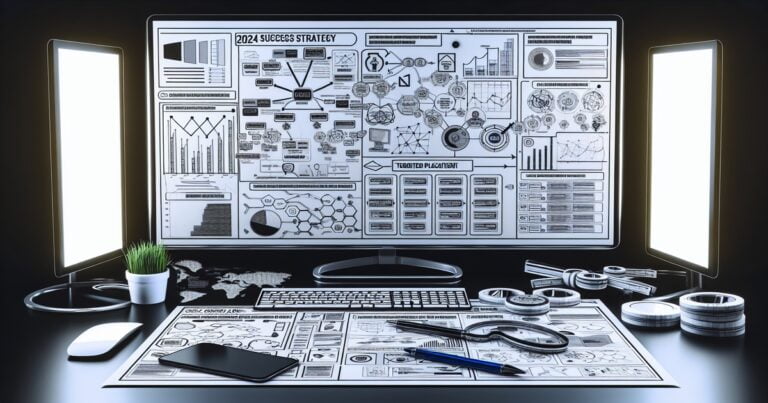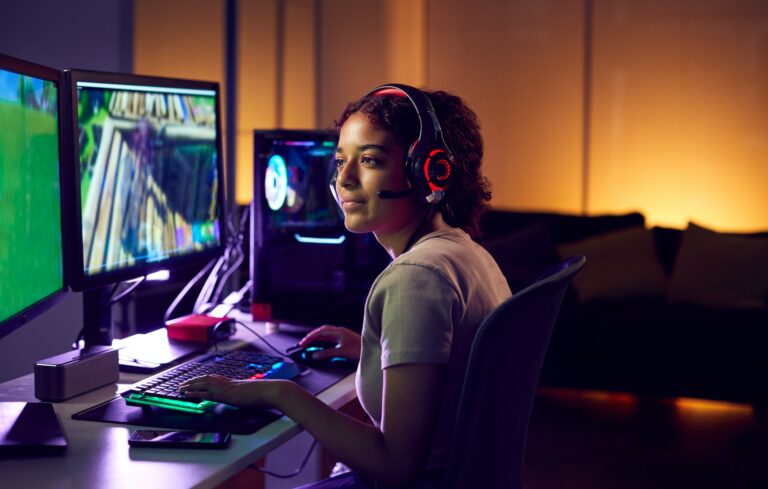The Future of Brand Identity Designers: Will AI Take Over?
Artificial Intelligence, or AI, is a rapidly advancing technology that has the potential to revolutionize various industries, including design. It involves the use of computer systems to perform tasks that would normally require human intelligence such as problem-solving, decision making, and pattern recognition.
In recent years, designers have started incorporating AI into their workflow to help streamline processes and improve efficiency. One area where this is particularly evident is in brand identity design.
A brand’s identity encompasses everything from its logo and visual elements to its messaging and overall personality. It is a crucial aspect of any business that can make or break its success.
With the rise of AI technology in design, there is a growing concern that it may replace human designers entirely. In this article, we will take a closer look at the role of AI in design as well as the current state and potential future impact on brand identity designers.
Summary of Key Points
In this paper, we have explored the growing use of AI technology in design and the potential impact on brand identity designers. We have established that while AI technology offers many advantages, such as speed and efficiency, it also raises concerns about job security for designers and the role of human creativity in the design process. We have examined successful examples of brand identity designs created by humans and those created using AI to understand how these two approaches differ.
The Rise of AI in Design
The use of artificial intelligence in design has become increasingly popular over the past few years. One example of how it is used is through generative design software. This type of software uses algorithms to come up with multiple variations for a given design project based on certain input parameters such as budget or desired aesthetic preferences.
By using machine learning algorithms, this software can learn from previous designs and improve over time. Another area where AI is being used in design is through automated layout generation.
For example, layout software can analyze user input (such as content) and automatically generate layouts tailored to fit those parameters – helping eliminate much drudgery involved with laborious manual work like fixing text wraps or adjusting page-by-page layouts one by one. While there are certainly advantages to using AI in design such as increased efficiency and productivity, there are also drawbacks.
One concern is that AI may lead to a loss of creativity and originality in design. With the computer doing much of the heavy lifting, designers may feel less ownership over their work and less personally invested in the final product.
Brand Identity Designers: The Human Touch
Brand identity designers play a critical role in creating unique, memorable brand identities that resonate with audiences. They bring a human touch to the design process by using creativity, intuition, and other skills that cannot be replicated by machines.
This is especially important when it comes to creating a brand’s personality or tone of voice. While AI can certainly analyze data on audience preferences, it cannot replace the nuanced understanding of human behavior required for effective branding.
Furthermore, brand identity designers are responsible for crafting designs that accurately reflect a company’s values and mission. This requires an understanding of not only design principles but also the company’s culture and vision – something that an AI system may not fully grasp.
The Potential Impact on Brand Identity Designers
The rise of AI technology has led many to believe that it may eventually replace human designers altogether. While this may be true to some extent for more technical aspects of design such as layout generation or color palette optimization (which can actually help improve overall creativity), there will still be areas where human expertise is irreplaceable – particularly when dealing with questions about branding strategy or determining how best to communicate messages visually. While AI technology certainly has its place in design and will undoubtedly continue to make significant strides forward towards automation at some level soon enough – whether it’s replacing brand identity designers entirely – remains yet uncertain as each designer brings their own unique perspective based off experience over time which just cannot be replicated artificially just yet.. However, regardless of what happens moving forward, it’s clear that there will always be a place for the human touch in the world of design.
The Role of Brand Identity Designers
Definition and Purpose of Brand Identity Design
Brand identity design, also known as visual identity design, is the process of creating a distinct and recognizable visual representation for a brand or company. This includes everything from the logo to the color scheme to the typography used in marketing materials.
A successful brand identity design should convey the personality, values, and essence of the brand in a way that resonates with its target audience. The purpose of brand identity design is to create a cohesive and consistent image that communicates what a brand stands for.
When done well, it can help build trust with consumers, differentiate a brand from its competitors, and create an emotional connection that fosters loyalty. It is an essential part of any marketing strategy as it sets the foundation for all future communication efforts.
Importance of Human Creativity and Intuition in the Design Process
While AI technology has made significant advances in recent years, there are certain aspects of design that are best left to human creativity and intuition. Brand identity designers are skilled at interpreting abstract concepts like emotions and values into tangible visual elements that resonate with people on a deeper level. Designers have an innate ability to understand how different colors, shapes, and textures work together to create meaning.
They can use this understanding to craft designs that establish an emotional connection with consumers. Additionally, designers have a sense of intuition that allows them to make creative decisions based on their understanding of human behavior.
It’s important not to overlook the value human creativity brings when creating brand identities. While AI may be able to automate some aspects of design work such as selecting color palettes or generating font combinations, it lacks the ability for creativity which makes up 70% percent role played by humans in branding according to Forbes.
Examples of Successful Brand Identity Designs Created by Humans
Some of the most iconic brand identities were created by human designers. For example, the Nike swoosh was designed by Carolyn Davidson in 1971, and has since become one of the most recognizable logos in the world. The Apple logo, created by graphic designer Rob Janoff in 1977, has also become an iconic symbol of innovation and design.
Other successful brand identity designs include Coca-Cola’s distinctive red-and-white script logo, which was developed in 1887 and is still in use today. The FedEx logo, designed by Lindon Leader in 1994, is a simple yet memorable design that uses negative space to create an arrow between the “E” and “X,” representing forward motion and speed.
These examples demonstrate the importance of human creativity when it comes to creating successful brand identities. Each of these designs not only captures the essence of their respective brands but also resonates with consumers on a deeper level.
The Rise of AI in Design
Artificial intelligence (AI) is a rapidly evolving technology that has the potential to revolutionize various industries. One such industry is design, where AI is increasingly being used to assist designers in creating stunning works of art. AI can be used in various areas of design, from web design to fashion design and even brand identity design.
Explanation of how AI is used in design
AI can be used in a variety of ways when it comes to designing. One popular way that AI is being employed by designers is through generative algorithms that create designs based on specific inputs and parameters.
For example, an algorithm could be programmed to generate logos for a company based on certain criteria such as the company’s name, industry, and audience. Similarly, another way that AI can be utilized is by using machine learning algorithms that analyze data on user preferences and behaviors, allowing designers to create more tailored designs.
Advantages and disadvantages of using AI in design
One significant advantage of using AI in design is its ability to work quickly and efficiently by churning out multiple designs within a short period. Additionally, with the help of advanced analytics tools, AI can also predict how users will respond to specific designs before they are even created. However, there are also some disadvantages associated with using AI in design.
One notable disadvantage is the lack of empathy or emotional intelligence that machines possess compared to humans who bring an emotional element into their creations. Human designers bring their creativity and intuition into their works which allows them to convey emotions better than machines.
Examples Of Successful Designs Created Using AI
Several brands have successfully utilized the power of artificial intelligence technology for brand identity creation. For instance, Japanese beverage firm Asahi collaborated with IBM Watson’s powerful computing power for creating packaging designs for its beer cans with unique graphics based on the consumers’ preferences.
Additionally, Airbnb and Google partnered to develop a logo using machine learning algorithms that generated over 4700 designs based on visitors’ searches and website interactions. AI is quickly becoming an integral part of the design industry, with brand identity design being no exception.
While there are both advantages and disadvantages to using AI in design, it’s clear that it has enormous potential for helping designers create unique and compelling works of art. As technology continues to evolve, it will be exciting to see how designers incorporate new techniques to enhance their creative process.
Potential Impact on Brand Identity Designers
When AI technology began to emerge in the design world, many designers were skeptical about its impact on their profession. Will it replace them? Will they lose their jobs?
These are valid concerns that need to be addressed. With the increasing use of AI in design, there is a real possibility that brand identity designers may face job loss or at least a significant change in their roles and responsibilities.
Concerns about Job Security for Designers
One of the biggest concerns for brand identity designers is job security. As companies continue to rely more heavily on AI technology, there is a growing fear that designers may become obsolete.
While some tasks may be taken over by artificial intelligence, there are still elements of brand identity design that require human creativity and intuition. It’s important for designers to embrace new technologies and develop skills that complement AI instead of competing with it.
Potential Changes to the Role and Responsibilities of Designers
As AI technology becomes more advanced, it’s likely that the role and responsibilities of brand identity designers will change. Rather than focusing on mundane tasks such as selecting colors or fonts, designers will shift towards more strategic work such as creating brand stories or developing creative campaigns. This shift will require designers to develop new skills such as data analysis or customer research while also embracing collaboration with AI tools.
Possibility for Collaboration between Designers and AI Technology
While there are concerns about job loss or changes in responsibilities, there is also the potential for collaboration between brand identity designers and AI technology. For example, AI could be used to generate multiple design options quickly while allowing human designers to focus on refining those designs through creative problem-solving skills.
Additionally, AI could be used in combination with human intuition to create new designs based on customer feedback or market trends. While the rise of AI technology in the design world may have some potential impacts on brand identity designers, it’s important to recognize that human creativity and intuition will still play a vital role in the process.
By embracing new technologies and evolving their skill sets, designers can work alongside AI tools to create even more innovative and effective designs. While there may be changes in their roles and responsibilities, designers should not fear job loss as there will always be a need for creative thinking in branding.
Conclusion
Implications for the Future Role of Brand Identity Designers
As AI technology continues to advance, its increasing use in design is likely to change the role and responsibilities of brand identity designers. While some may view this as a threat to their job security, others may see it as an opportunity for collaboration with AI tools. There is potential for designers to work alongside AI technology to enhance their own creative processes and create even more innovative designs.
The Role of Human Creativity in an Age of Advancing Technology
Despite advancements in AI technology, human creativity remains a fundamental element in designing effective brand identities. While machines can certainly automate certain aspects of design work, they lack the intuition, diversity, and adaptability that make human designers so valuable.
Creativity is not something that can be programmed – it comes from within us as individuals with unique perspectives. While there are valid concerns about how advancements in AI will impact brand identity designers’ future roles and responsibilities – such as automation replacing some tasks or redefining their work – there is still plenty of reason for optimism.
Technology can never replace human creativity or intuition when it comes to designing effective brand identities; instead, these tools can act as helpful aids to enhance our own creative processes. Ultimately, we believe that by embracing both new technologies like AI alongside our own human ingenuity and creativity within branding and design, we can create even more innovative solutions in the future.









